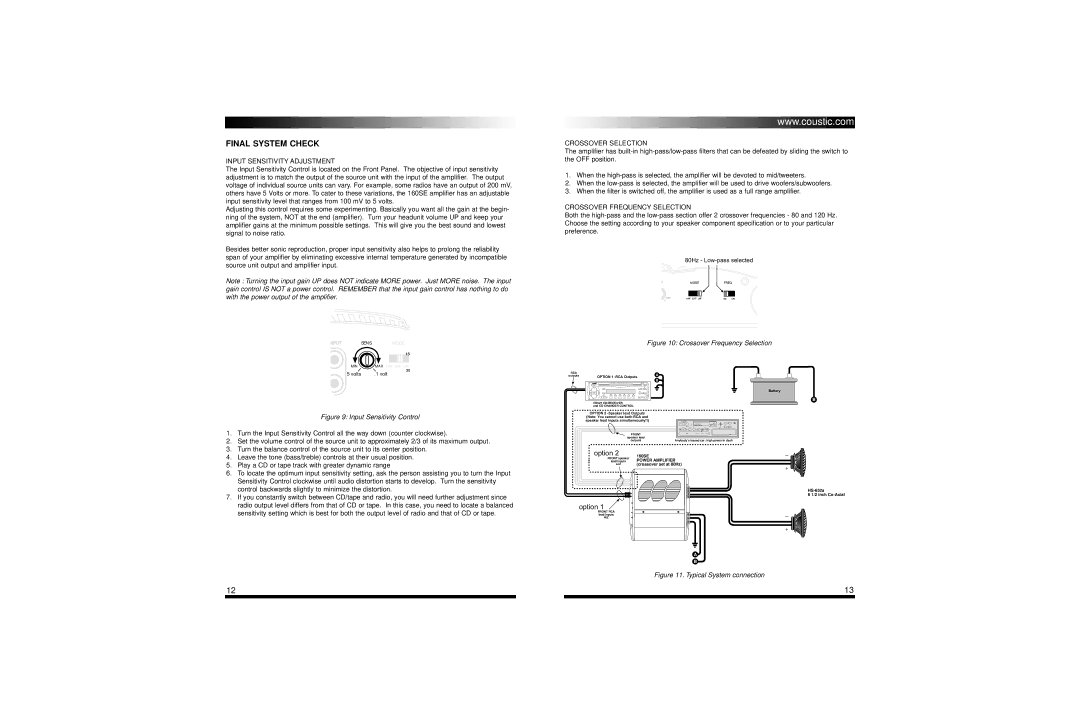160SE specifications
The Coustic 160SE is a powerful and versatile audio amplifier that has gained popularity among audio enthusiasts and professionals alike. Designed to offer superior sound quality and robust performance, the 160SE is well-suited for various applications, ranging from home theater setups to professional sound reinforcement.One of the standout features of the Coustic 160SE is its impressive power output. Capable of delivering up to 160 watts per channel into 4 ohms, this amplifier ensures that users can enjoy rich and dynamic audio reproduction. This level of power provides ample headroom, enabling the 160SE to handle demanding soundtracks and intricate audio with ease. The amplifier's low total harmonic distortion (THD) rating guarantees that the audio remains clean and undistorted even at high volumes.
The 160SE employs advanced circuit design and high-quality components to maximize its performance. The use of high-grade capacitors and inductors contributes to improved efficiency and sound clarity. Additionally, the unit features a built-in thermal protection system that safeguards the amplifier from overheating, ensuring long-lasting operation and reliability.
One of the key technologies present in the Coustic 160SE is its class AB amplification. This design combines the best aspects of class A and class B amplifiers, resulting in improved linearity and reduced distortion while maintaining efficiency. Users will appreciate the warm and natural sound signature that is characteristic of class A/B designs. The amplifier also includes variable crossover controls, allowing users to tailor the sound to best fit their specific audio needs.
The Coustic 160SE is equipped with multiple input options, including both low-level RCA inputs and high-level (speaker wire) inputs, making it compatible with a wide range of audio sources. The rear panel features comprehensive binding posts for easy speaker connections, as well as gain controls for each channel, enabling precise level adjustments.
For those seeking an amplifier that combines power, versatility, and quality, the Coustic 160SE stands out as an excellent choice. Its robust features, coupled with its advanced technologies, ensure that it delivers a stellar audio experience for both casual listeners and audiophiles alike. Whether used in a home audio system, for live sound monitoring, or in a professional studio, the 160SE is designed to meet and exceed expectations.

